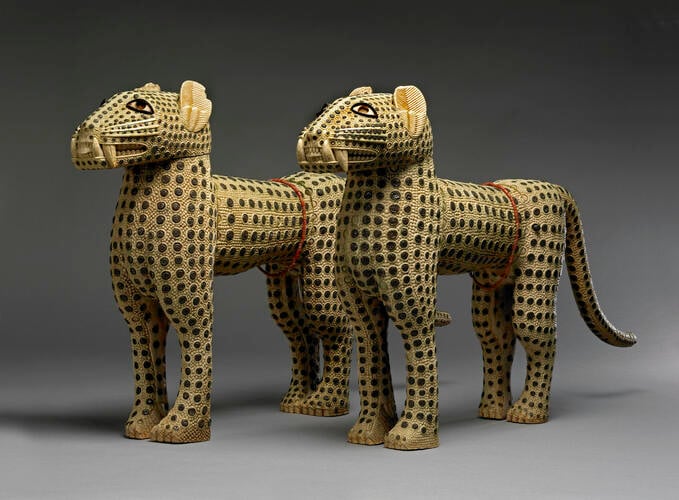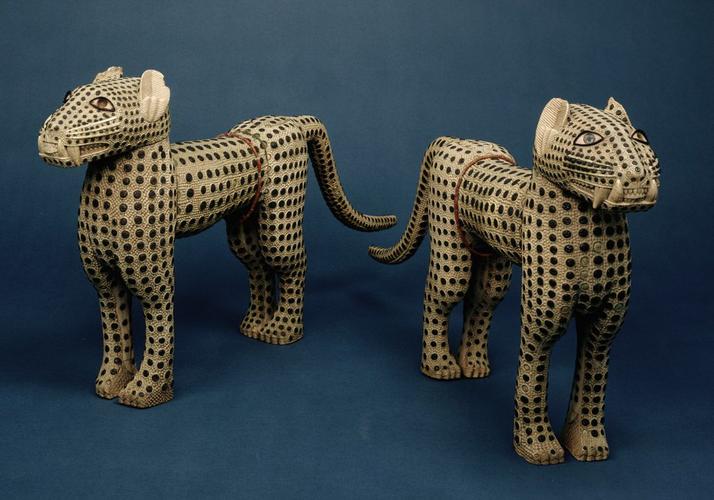-
1 of 253523 objects
Carved leopards nineteenth century
Ivory, copper | RCIN 69926
-
A pair of carved, stylized, ivory leopards, with spots of inlaid copper, each animal comprising five separable parts: head, shoulder and front legs, torso, hind quarters and tail. Each part made from a separate tusk. The copper for the spots was likely re-used from the percussion caps of contemporary rifles.
Leopards were considered 'kings of the forest' and were an important symbol of regal power in Benin. Obas (the rulers of Benin) kept a number in captivity as well as maintaining specialist guilds of leopard hunters at court. Brass or ivory models of leopards adorned the palace in Benin City, and kings were frequently depicted holding a pair of leopards by their tails as an emblem of supremacy.Provenance
Presented to Queen Victoria by Admiral Sir Harry Holdsworth Rawson (1843-1910) after the capture of Benin by British troops in 1897. One of the leopards is partially visible in a photograph, dated 1897, of items taken from the oba's palace (British Museum Af,A79.13).
The two 'Carved Ivory Animal[s] with copper studs and coral necklaces' were displayed at Windsor Castle in the Museum (now China Museum) in 1900. Placed on long-term loan to the British Museum by King George V in 1924, at which time the leopards were thought to date from the seventeenth century. Exhibited at 'Traditional Art from the Colonies', Imperial Institute, May-September 1951. -
Creator(s)
(nationality)(nationality)Acquirer(s)
-
Medium and techniques
Ivory, copper
Place of Production
Benin



